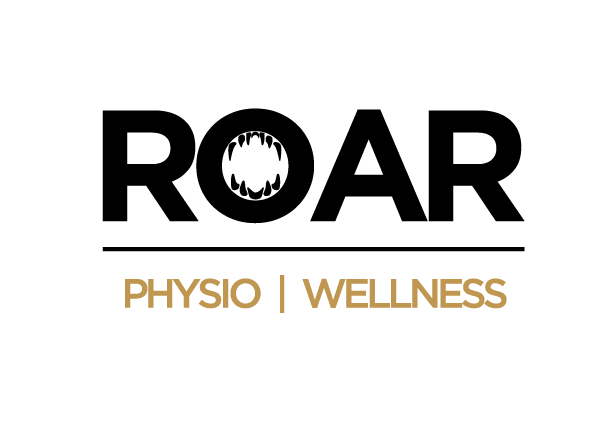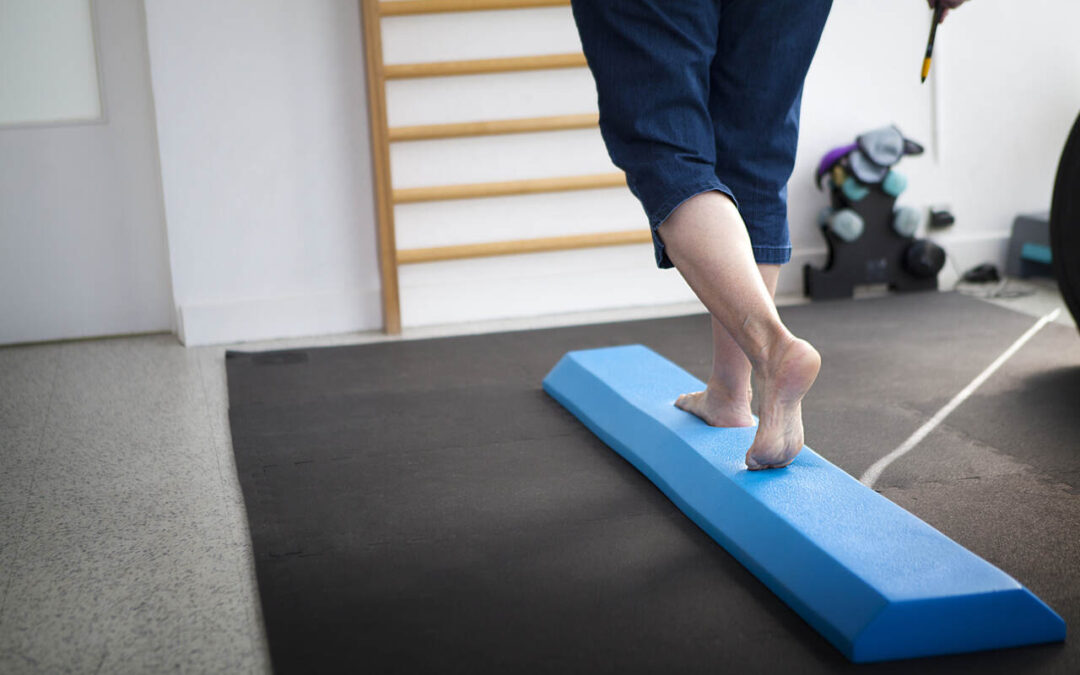Understanding Gait Instability
What is Gait Instability?
Gait instability refers to an impaired ability to walk in a steady and balanced manner. It can manifest as unsteady movements, difficulty in maintaining a straight path, or an increased risk of falling. For many individuals, this condition can significantly impact daily life and overall well-being.
Gait instability often arises when there is a problem in the vestibular system, a complex network located in the inner ear that helps regulate balance and spatial orientation. If you’re experiencing gait instability, understanding its nature and root causes is the first step in seeking effective vestibular rehabilitation for gait instability.
Causes of Gait Instability
Several factors can contribute to gait instability. Identifying the underlying cause is crucial for developing an effective treatment plan. Below are some common causes of gait instability:
| Cause | Description |
|---|---|
| Vestibular Disorders | Conditions such as vertigo, dizziness, and vestibular neuritis can disrupt your balance and cause unsteady movements. Learn more about vestibular rehabilitation for vertigo and vestibular rehabilitation for dizziness. |
| Neurological Conditions | Disorders like Parkinson’s disease, multiple sclerosis, and stroke can impair your walking ability by affecting the brain or nervous system. |
| Muscle Weakness | Weakness in the legs or core muscles can make it difficult to maintain balance, especially on uneven surfaces. |
| Medications | Certain drugs can have side effects that impact your balance and coordination, leading to gait instability. |
| Aging | Age-related changes in muscle mass, joint function, and sensory perception can contribute to balance issues. Read about vestibular rehabilitation for age-related balance issues. |
| Inner Ear Infections | Infections disrupting the vestibular system can lead to temporary or chronic issues with balance and gait. |
Understanding the specific cause of your gait instability will better inform the techniques used in your vestibular rehabilitation program. Certain disorders, like Meniere’s disease, may require a targeted approach through vestibular rehabilitation for Meniere’s disease, while other conditions like BPPV (benign paroxysmal positional vertigo) can be addressed with vestibular rehabilitation for BPPV.
Exploring gait instability further helps pave the way for effective treatment plans and interventions, enabling you to regain stability and confidence in your movements.
Importance of Vestibular Rehabilitation
Role of Vestibular System in Gait Stability
The vestibular system, located in the inner ear, plays a critical role in maintaining balance and stabilizing gait. It sends signals to the brain about head movements and spatial orientation, which help you keep your balance as you walk. When the vestibular system is impaired, it can lead to gait instability, making everyday activities challenging and increasing the risk of falls.
The vestibular system works in conjunction with the visual and proprioceptive systems. Together, they coordinate your movements and balance by processing sensory information. A well-functioning vestibular system allows you to navigate through various terrains and environments with ease.
Benefits of Vestibular Rehabilitation
Vestibular rehabilitation is a specialized form of therapy designed to alleviate symptoms of vestibular disorders, such as gait instability. This type of rehabilitation offers several benefits, including improved balance, reduced dizziness, and enhanced overall mobility.
One of the primary advantages of vestibular rehabilitation is its ability to restore balance and reduce the likelihood of falls. Through targeted exercises and tailored treatment plans, you can retrain your brain and body to respond more effectively to balance-related challenges. Learn more about the vestibular rehabilitation for fall prevention.
Additionally, vestibular rehabilitation can significantly diminish the symptoms of dizziness and vertigo, thereby improving your quality of life. The exercises involved focus on desensitizing the vestibular system to disorienting movements, reducing the frequency and intensity of dizzy spells. For more information, see vestibular rehabilitation for dizziness and vestibular rehabilitation for vertigo.
Numerous conditions benefit from vestibular rehabilitation, including but not limited to:
| Condition | Link |
|---|---|
| Benign Paroxysmal Positional Vertigo (BPPV) | vestibular rehabilitation for bppv |
| Vestibular Neuritis | vestibular rehabilitation for vestibular neuritis |
| Meniere’s Disease | vestibular rehabilitation for meniere’s disease |
| Age-related Balance Issues | vestibular rehabilitation for age-related balance issues |
| Motion Sensitivity | vestibular rehabilitation for motion sensitivity |
| Post-concussion Syndrome | vestibular rehabilitation for post-concussion syndrome |
| Migraine-associated Vertigo | vestibular rehabilitation for migraine-associated vertigo |
| Balance Disorders | vestibular rehabilitation for balance disorders |
By engaging in a well-structured vestibular rehabilitation program, you have the opportunity to regain control over your movements and reduce the symptoms that impact your daily life. Consult with a healthcare provider to determine the best course of action for your specific condition.
Vestibular Rehabilitation Techniques
Assessment and Diagnosis
Effective vestibular rehabilitation starts with a thorough assessment and diagnosis by a healthcare professional. This phase involves evaluating your symptoms, medical history, and conducting various tests to determine the exact cause of your gait instability. Common diagnostic methods include:
- Vestibular Testing: Evaluates the function of your inner ear and balance system.
- Gait Analysis: Observes how you walk to identify abnormalities.
- Balance Tests: Assesses your overall stability and risk of falls.
By understanding the root cause of your gait issues, a personalized rehabilitation plan can be formulated. Explore more about diagnosis methods on vestibular rehabilitation for balance disorders.
Customized Exercise Programs
Once the underlying cause is identified, customized exercise programs are designed to address specific issues. These programs may include:
- Vestibulo-Ocular Reflex (VOR) Exercises: Helps improve coordination of eye and head movements.
- Adaptation Exercises: Helps your brain adjust to changes in the vestibular system.
- Substitution Exercises: Teaches your body to use other senses to maintain balance.
| Exercise Type | Purpose |
|---|---|
| VOR Exercises | Eye and head movement coordination |
| Adaptation Exercises | Brain adjustment |
| Substitution Exercises | Alternative balance strategies |
Customized exercise programs are tailored to your specific needs and symptoms, making them highly effective. More information on the benefits of specific exercises can be found in vestibular rehabilitation for vertigo.
Balance Training
Balance training is a crucial aspect of vestibular rehabilitation, focusing on improving your overall stability to prevent falls. Techniques include:
- Static Balance Exercises: Practicing standing still in different positions.
- Dynamic Balance Exercises: Training stability while moving, such as walking on uneven surfaces.
- Strength Training: Building muscle strength to support better balance.
Programs are usually designed to progressively challenge your balance, ensuring gradual improvement. Learn more about integrating these exercises for effective fall prevention by visiting vestibular rehabilitation for fall prevention.
These vestibular rehabilitation techniques aim to restore your gait stability and improve your quality of life. Collaborating with a healthcare professional ensures tailored strategies that address your unique needs, facilitating a successful rehabilitation journey.
Lifestyle Adjustments for Better Gait Stability
Enhancing your gait stability through lifestyle adjustments can complement vestibular rehabilitation efforts effectively. Here are key areas to focus on:
Proper Footwear
Wearing the right shoes is crucial for maintaining balance and improving gait stability. Proper footwear provides the necessary support and cushioning to help you walk more steadily.
| Shoe Feature | Importance |
|---|---|
| Good Arch Support | Helps distribute weight evenly across the foot. |
| Non-Slip Soles | Reduces the risk of slipping, especially on smooth surfaces. |
| Comfortable Fit | Prevents foot pain and discomfort, aiding in better balance. |
Home Safety Measures
Making your home environment safer can significantly reduce the risk of falling and improve overall gait stability. Implement these safety measures to create a more secure living space:
- Remove tripping hazards: Clear pathways of clutter, loose rugs, and electrical cords.
- Install grab bars: Place grab bars in critical areas such as bathrooms and stairwells.
- Enhance lighting: Ensure all areas, especially hallways and staircases, are well-lit to avoid stumbling in low visibility.
For those experiencing specific balance disorders, explore our article on vestibular rehabilitation for balance disorders for more detailed guidance.
Posture Correction
Maintaining proper posture can play a significant role in gait stability. Poor posture can strain muscles and joints, leading to imbalances. Here are some posture correction tips:
- Stand Tall: Keep your back straight, shoulders back, and head aligned with your spine.
- Strengthen Core Muscles: Engage in exercises that strengthen your core muscles to provide better support for your spine.
- Regular Movement: Avoid staying in one position for too long. Regular movement helps prevent stiffness and promotes better posture.
By incorporating these lifestyle adjustments, you can enhance the effectiveness of your vestibular rehabilitation and achieve better gait stability. For more information on different vestibular conditions and their treatments, refer to our articles on vestibular rehabilitation for vertigo and vestibular rehabilitation for dizziness.
Working with a Healthcare Professional
Engaging with a healthcare professional is a critical step in addressing gait instability through vestibular rehabilitation. Here, we explore how to find a specialist, collaborate effectively, and monitor progress in your rehabilitation journey.
Finding a Vestibular Rehabilitation Specialist
Finding the right vestibular rehabilitation specialist involves several steps:
- Referrals: Start by asking for referrals from your primary healthcare provider. They can recommend a qualified specialist.
- Research: Look for specialists with certifications in vestibular rehabilitation. This information is often available on healthcare websites or professional directories.
- Consultations: Schedule consultations to discuss your condition and evaluate the specialist’s approach. Ensure they have experience with conditions related to your symptoms, such as vestibular neuritis or balance disorders.
Collaborating on Your Rehabilitation Plan
Effective collaboration with your specialist can significantly enhance your rehabilitation outcomes. Key steps include:
- Communicate Symptoms: Clearly articulate your symptoms and how they affect your daily life. This information is essential for tailoring your treatment.
- Set Goals: Work with your specialist to set realistic, measurable goals. Whether it’s reducing dizziness or improving balance, clear goals help track progress.
- Exercise Adherence: Adhere to the prescribed exercises and routines. Consistency is crucial for achieving the desired outcomes.
- Feedback: Provide regular feedback to your specialist about your experiences and any difficulties you encounter.
Monitoring Progress and Adjusting Strategies
Progress monitoring is vital for ensuring the effectiveness of your rehabilitation plan. Here’s how it can be done:
- Regular Assessments: Undergo regular assessments to evaluate improvements in balance and gait stability. These could include physical tests and questionnaires.
- Adjustments: Based on assessment results, your specialist may adjust your exercise regimen. This could include modifying exercises or introducing new techniques.
- Long-term Monitoring: Over time, continuous evaluation helps in maintaining progress and preventing relapses. Your specialist may suggest periodic check-ins even after initial goals are met.
| Assessment Frequency | Activities |
|---|---|
| Initial Assessment | Comprehensive evaluation of gait and balance |
| Weekly | Feedback sessions to fine-tune exercises |
| Monthly | Progress checks and potential strategy revisions |
| Long-term | Periodic assessments to maintain gains |
Collaborating with a healthcare professional is crucial for effective vestibular rehabilitation. By finding the right specialist, setting clear goals, and regularly monitoring progress, you can significantly improve your gait stability and overall quality of life. For more information on various vestibular conditions and their specific rehabilitation techniques, visit our detailed guides on vestibular rehabilitation for vertigo and vestibular rehabilitation for dizziness.

